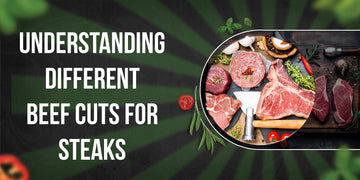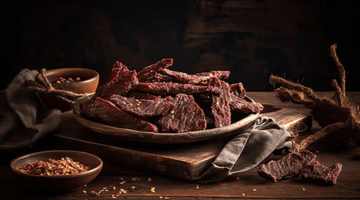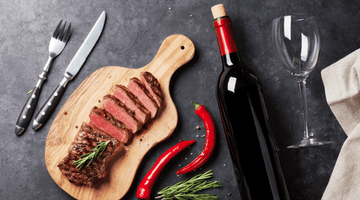
Steak lovers often find themselves navigating a maze of beef cuts at the butcher's counter, each offering a unique texture, flavor, and tenderness. Whether you're grilling, pan-searing, or oven-roasting, choosing the right cut is crucial for a satisfying steak experience.
In this guide, we will have a look into the world of beef cuts, exploring popular choices, grading systems, and essential factors to consider when selecting the perfect steak.
Also Read: How to Freeze Cooked Meat?
Types of Beef Cuts
T-Bone Cut
The T-Bone cut is a classic favorite, showcasing a T-shaped bone that separates two distinct muscles: the top loin and the tenderloin. This cut offers a combination of rich marbling and tenderness, making it a favorite among steak enthusiasts. The T-Bone is often associated with the best of both worlds – the robust flavor of the top loin and the buttery tenderness of the tenderloin.
Ribeye Cut
Known for its exceptional marbling and juicy texture, the Ribeye cut is a prime choice for steak lovers. Located in the rib section of the cow, this cut consists of the eye of the rib, delivering a well-balanced flavor profile. The high fat content in the Ribeye contributes to its succulence and makes it a go-to option for those who appreciate a rich, beefy taste.
Fillet or Tenderloin Cut
If tenderness is your top priority, the Fillet or Tenderloin cut is the go-to option. This cut comes from the loin area and is prized for its unmatched tenderness and mild flavor. While it may lack the intense marbling of other cuts, the fillet compensates with its buttery texture, making it a favorite for special occasions.
Differing Grades of Steak
Understanding the grading system of beef is essential when choosing the perfect steak. The United States Department of Agriculture (USDA) assigns grades based on factors like marbling, maturity, and color. Here are some common grades associated with steak cuts:
Rib
The Rib grade represents well-marbled beef with excellent tenderness, making it a popular choice for steaks. This grade often indicates a rich flavor profile, making it suitable for various cooking methods.
Short Loin
Steaks from the Short Loin are typically of high quality, boasting a fine balance of marbling and tenderness. This grade includes popular cuts like T-Bone and Porterhouse, providing versatility in cooking applications.
Sirloin
Sirloin cuts are known for their leaner profile compared to other grades. While they may not have the same level of marbling, sirloin steaks offer a robust beefy flavor and are often more budget friendly.
Also Read: Beef Cuts for BBQ: Smoking and Grilling Technique
How to Choose the Best Steak Cut
Grade
When selecting a steak, consider the grading system to ensure you get the desired quality. Prime cuts are the highest grade, followed by Choice and Select. Prime steaks exhibit superior marbling, making them the top choice for tenderness and flavor.
Thickness
The thickness of a steak impacts its cooking time and overall experience. Thicker cuts, such as bone-in rib eyes, may take longer to cook but offer a more succulent, juicy result. Thinner cuts, like flank steaks, cook quickly but can be prone to overcooking and drying out.
Price
While Prime-grade steaks are top-tier in quality, they often come with a higher price tag. Consider your budget when choosing a steak and explore alternative cuts that provide excellent flavor without breaking the bank.
What Are You Making?
Different steak cuts suit various cooking methods and recipes. Consider the dish you're preparing – whether it's a grilled masterpiece, a pan-seared delight, or a slow-cooked creation – and choose a cut that complements your cooking style.
Conclusion
Exploring different types of beef cuts for steaks can be super fun if you're into cooking. Knowing what each cut is like, how it's graded, and what you personally like will help you pick the right one. Whether you love the juicy marbling in a Ribeye, the softness of a Fillet, or the mix of flavors in a T-Bone, choosing the perfect cut will make your steak meal even better.
FAQs
-
What are the main types of beef cuts used for steaks?
The main types of beef cuts used for steaks include the T-Bone, Ribeye, and Fillet or Tenderloin cuts. Each cut offers a unique combination of flavor, tenderness, and marbling, catering to different preferences.
-
Which cuts are considered the most tender for steak lovers?
The Fillet or Tenderloin cut is widely regarded as the most tender. Its buttery texture and mild flavor make it a top choice for those who prioritize tenderness in their steak experience.
-
Can I substitute one steak cut for another in a recipe?
While certain cuts are better suited for specific recipes, many can be substituted with minor adjustments. Understanding the characteristics of each cut will help you make suitable substitutions without compromising the overall quality of your dish.




